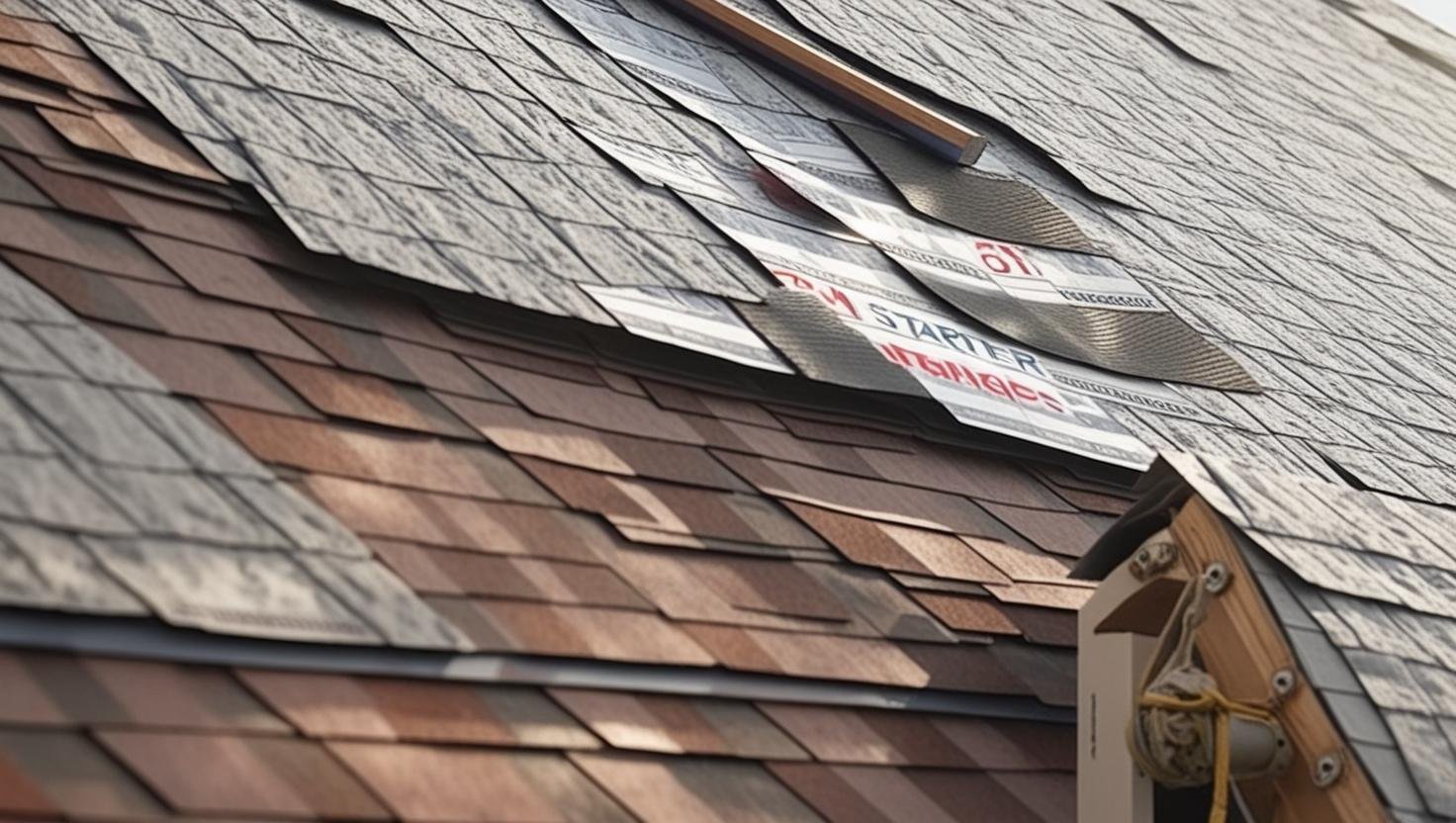Can I Replace My Own Roof? Expert Advice You Need Now
Introduction
I used to think that if I followed enough tutorials online, I could tackle just about any DIY project. I’d already painted walls, installed shelving, and even tiled a backsplash—so when I looked at my aging asphalt-shingled roof, I figured, “How hard could it be?”
Table of Contents
ToggleBut once I took a closer look, I realized roofing wasn’t just another weekend job. It’s a serious task that involves physical effort, safety risks, and technical skills. I read a survey of 2,000 homeowners—eight percent caused damage, and 16 percent got injured trying what they thought were easy DIY tasks. That was enough to make me pause.
Replacing a roof isn’t like planting flowers or staining a deck. You need the right tools, special training, and knowledge of structural integrity. And even then, one small mistake could lead to leaks or long-term damage. Sure, I thought about the money I’d save and the pride I’d feel. But once I weighed the cost vs. risk, it was clear: this wasn’t worth doing alone. After checking estimates and getting advice from a local roofing company, I made the smart choice—I hired a professional. Trust me, things often look easier on YouTube than they are in real life.
Can You Replace Your Own Roof?
Taking on your own roof replacement might sound like a bold and satisfying challenge. I’ve seen friends try it—some with success, others not so lucky. I’ve worked alongside roofing crews in Raleigh, NC, and even with five skilled workers, it still took two full days to get the job done right.
Going solo means your attic and home are exposed to weather for much longer. If you’re unsure about nail size, shingle alignment, or how to handle underlayment, you could end up with leaks—or worse, a second repair job soon after.
Even with solid planning and the right gear, working on a roof is risky business. It’s not just about being handy—it’s about having the experience. If you’re not already in the roofing world or haven’t worked with similar materials before, it might be too big of a leap.
That said, I understand the drive. Wanting to learn, to build trust in your skills—it’s admirable. Just make sure you also get a few professional estimates, maybe a roof inspection, and really think about whether this fits your skill level or career background. In the end, knowing when to ask for help is just as valuable as doing it yourself.
How Weather and Timing Can Affect Your Roof Replacement
When I started planning my roof replacement, I didn’t think much about weather patterns or seasonal timing—but it turns out, both play a huge role in the success of the project.
Roofing is heavily weather-dependent. Whether you’re hiring professionals or going DIY, trying to replace a roof in the middle of a rainy season, during a heatwave, or in freezing temperatures can lead to major setbacks. Asphalt shingles, for example, need moderate temperatures to seal properly. If it’s too cold, they may not adhere well. If it’s too hot, they can become too soft and easy to damage.
I spoke with a local contractor who told me the ideal time in our region is late spring through early fall. During these months, conditions are generally dry, and temperatures are optimal for installation. Roofing during these windows also gives you enough daylight to get more done each day—critical if you’re doing it yourself and moving slower than a crew.
Wind is another factor. Trying to handle shingle bundles, underlayment, or roofing felt in strong gusts is not just annoying—it’s dangerous. A gust can knock you off balance or blow materials right off the roof.
Planning your timing also impacts your budget. During off-seasons like winter, some contractors offer discounted rates to keep their teams working. But that might come at the cost of longer project times or the risk of weather delays.
So, before you schedule or start, check the forecast, look at your local climate, and plan accordingly. Trust me—roofing in the right weather makes the job smoother, safer, and more successful.
Is It Safe to Replace Your Own Roof?
Let’s talk safety—because it’s the number one thing you should think about before heading up that ladder.
I’ve done my fair share of DIY fixes, but roofing is on a whole other level. You’re high off the ground, handling heavy materials, working in the sun or cold, and balancing on a sloped surface. One bundle of shingles can weigh up to 80 pounds—try carrying that up a ladder wearing gloves, construction clothes, a helmet, and non-slip boots.
I’ve seen professional roofers move across a roof like it’s second nature. That comes from years of training—they know where to step, how to protect the structure, and how to handle things like starter shingles, flashing, and drip edge in a way that avoids costly errors.
Many people are tempted by the cost savings, thinking it’s a budget-friendly solution. But if you fall, make a wrong cut, or damage the decking, your costs (and risks) skyrocket. Plus, doing it wrong could void your roof’s warranty.
So before going all in, do your research. Read roofing blogs. Ask a roofing contractor for their opinion. Even just an estimate can help you see whether this is really a job you should do alone.

What Permits and Codes Should You Know Before Replacing a Roof?
Before you tear off a single shingle, there’s one thing many DIYers overlook—local building permits and roofing codes. When I first considered replacing my roof, I didn’t realize that skipping this step could mean fines, project delays, or even forced re-roofing by the city.
Every region has specific requirements. In many areas, you need to apply for a roofing permit through your city or county’s building department before starting work. The process usually involves submitting project details—like what type of roofing material you’re using, how much of the roof is being replaced, and whether structural changes are involved.
Then come inspections. Inspectors might visit your home to check things like decking integrity, flashing installation, or even nail patterns—especially if the job isn’t done by a licensed contractor. If your project doesn’t meet code, you could be required to redo sections of the roof at your own expense.
There are also zoning laws and HOA restrictions to think about. In my neighborhood, for example, certain colors and materials were prohibited—even if they were more durable. Without checking first, I would’ve wasted money and had to start over.
Bottom line: even if you’re confident in your skills, don’t ignore the paperwork. Call your local office, check the guidelines, and make sure your project is legal and safe. It’s a step that might feel like red tape, but it protects your home—and your wallet.
What Tools Does DIY Roofing Require?
When I first thought about replacing my own roof, I didn’t realize just how many tools I’d need—and how specific they are.
Yes, there are the basics: ladder, hammer, utility knife. But then you’ve got specialized tools like a roofing nail gun, chalk line, caulking gun, and tin snips. I also had to get a roofing shovel, pry bar, and hatchet to remove old shingles without damaging the deck underneath.
For safety, I wore non-slip boots, gloves, a helmet, and a safety harness. I kept a magnet tool nearby to collect stray nails and used tarps and a broom to keep things clean.
Renting gear like an air nailer cost me $100 a day. And I had to measure every inch carefully to avoid wasting materials. One wrong cut in the underlayment or misplacement of a shingle bundle could cost a lot.
In the end, I understood why roofing professionals are so efficient—they’ve got the gear, the know-how, and the experience to avoid the kind of rookie mistakes I nearly made.
What are the Steps of a Roof Replacement?
When I helped a friend re-roof his shed, I got a real taste of what’s involved. Spoiler: it’s more than just laying shingles.
- Prep the House – First comes the inspection. You or a contractor check for leaks, damaged decking, or rotted plywood. Then, clear the yard, protect vents and plants, and mark the area for safety.
- Tear Off the Old Roof – Removing shingles, underlayment, and flashing is tough work. You’ll expose ridge caps, valleys, and vents, so be careful not to damage them. Inspect sheathing—any soft spots must be replaced.
- Check and Fix the Roof Decking – If there’s water damage or weak areas, it’s critical to fix them now. Otherwise, your new roof won’t last.
- Install the Underlayment and Starter Shingles – Lay down a felt or synthetic barrier, install ice & water shield, and put in starter shingles. These steps protect against moisture and weather. Pay attention to nail spacing and follow instructions closely.
- Lay Down the Shingles – Start at the bottom, overlap each row, and work your way to the ridge. Take extra care around vents and ridge cap shingles to ensure a watertight seal.
- Final Touches and Cleanup – Install new flashing around vents and chimneys. Sweep up debris, collect nails with a magnet, and double-check everything—from ventilation to energy efficiency.
If you’re working on anything from a small gazebo to a full home, don’t rush. Even one overlooked detail can shorten your roof’s life by years.

What Sort of Roof Repairs Can You DIY?
Not every roofing task requires a contractor. Some minor repairs are manageable—replacing a single shingle, sealing a small leak with roofing sealant, or fixing flashing around a chimney using a caulk gun.
If you’re comfortable with tools and nailing techniques, these are the types of jobs you can likely handle. I’ve patched a few leaks myself after storms by re-securing loose shingles and using adhesive.
But once you’re dealing with rotted roof decking, flashing work, or significant water damage inside the home, it’s time to call in the pros. Tasks involving roof penetrations, slope adjustment, or full re-roofing are best left to someone with serious experience.
Want to Talk About Your Roof Replacement Project?
When I took on smaller roofing jobs, like a shed and porch, I learned a lot. But for my full home, I went with a professional. I got a consultation, and they gave me a five-day timeline. They noticed issues I didn’t even catch—damaged shingles, structural weak points, and more.
Working with a trained team gave me peace of mind. The new roof not only boosted my home’s curb appeal but also improved insulation and extended the roof’s lifespan.
If you’re thinking about your own project, start with an inspection. Get multiple estimates, ask questions, and consider what’s really best for your home—and your safety.
Final Thoughts
Replacing your roof is one of the biggest home improvement decisions you’ll ever face. While the DIY spirit is admirable, roofing isn’t just about laying shingles—it’s about safety, structure, skills, and long-term investment. I’ve been hands-on with small roofing tasks and have walked the steep learning curve of roofing prep and planning. Still, nothing compared to the peace of mind I felt once a licensed professional took over my full roof replacement.
If you’re determined and experienced, some repairs may be doable on your own. But when it comes to a full replacement, it’s often safer, smarter, and more cost-effective to get expert help. Sometimes, the most confident DIY decision is knowing when to delegate the danger and preserve your home’s value.
Take the time to research, get quotes, and weigh your options. And remember—just because you can do something yourself doesn’t always mean you should.
Can I Replace My Own Roof? (FAQ)
1. Can I legally replace my own roof without a contractor?
Yes, in many places, homeowners are allowed to replace their own roof. However, you’ll likely need a permit, and your work must meet local building codes. Always check with your city or county before starting the job.
2. How much money can I save by doing my roof replacement myself?
You could save on labor costs—anywhere from 30% to 60% of the total bill. But don’t forget tool rentals, disposal fees, safety gear, and the potential cost of mistakes. If done incorrectly, you may end up paying even more to fix the damage.
3. What happens if I install my roof incorrectly?
An improperly installed roof can lead to leaks, mold, structural damage, and even voided warranties. That’s why it’s essential to follow manufacturer guidelines and local building standards—or hire a pro to avoid long-term issues.
4. What is the hardest part of replacing a roof on your own?
Most homeowners find the hardest parts are safely working at heights, removing old materials, and ensuring correct shingle alignment and nailing. Roofing requires endurance, precision, and knowledge, especially for things like flashing, ventilation, and weatherproofing.
5. How long does it take to replace a roof without professional help?
If you’re doing it alone, it could take a week or more, depending on your skill level and the roof’s size. A professional crew usually finishes in 1–3 days, thanks to experience and efficiency. Delays can happen due to weather, unexpected repairs, or tool availability.



